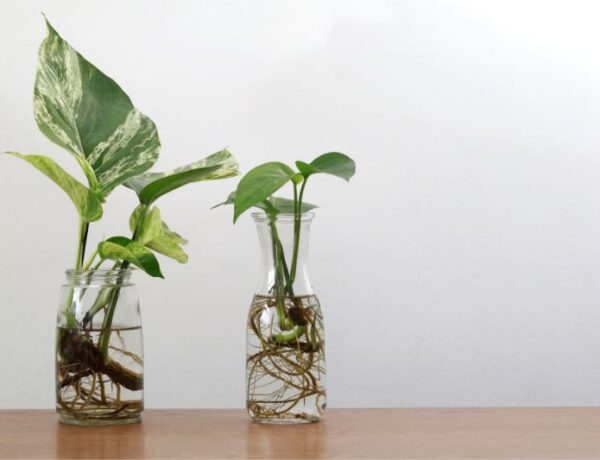If you’ve noticed some of your indoor plants developing roots that don’t seem to have any connection to the soil or the pot. Don’t worry, these are called aerial roots, and they’re actually a vital part of your plant’s growth and survival. In this article, we’ll explain everything you need to know about aerial roots, including what they are, how they work in indoor plants, and some useful tips on how to take care of them. So, let’s dive in!
Table of Contents
What are Aerial Roots?
Aerial roots are specialised roots that grow above the ground or attach themselves to other surfaces like trees or rocks. These types of roots are common in epiphytic plants, which are plants that grow on the surface of other plants without being parasitic. Some common houseplants that exhibit aerial roots include the popular Monstera deliciosa, Orchids, Ferns, Pothos, and Philodendrons.
How do Aerial Roots Function in Indoor Plants?

Aerial roots have several functions that are critical to the survival and growth of indoor plants. Here are the main functions:
Water and Nutrient Absorption
One of the most important functions of aerial roots is water and nutrient absorption. Since the roots of indoor plants are confined to a pot, aerial roots allow the plant to absorb more water and nutrients from the air. However, keep in mind that these roots are not designed to be permanently submerged in water, as it could lead to aerial root rot.
There’s also a scientific study suggesting that aerial roots may play an important role in the adaptation of plants to high humidity environments. However, more research is needed to fully understand their role in different plant species under high humidity conditions.
Support
In the wild, epiphytic plants use aerial roots to anchor themselves to other plants or surfaces, allowing them to grow taller and reach more sunlight. In indoor plants, aerial roots can help the plant grow taller and more robust, especially when trained to climb a trellis or moss pole.
Adaptation to Low-Nutrient Environments
Aerial roots also help indoor plants adapt to low-nutrient environments. Since these roots can absorb nutrients from the air, they allow the plant to survive in environments where there may be a lack of nutrients in the soil.
Contribution to Photosynthesis
Finally, aerial roots can contribute to photosynthesis. Some plants have chlorophyll in their aerial roots, which allows them to photosynthesize and create energy for the plant.
Frequently Asked Questions About Aerial Roots
Aerial roots are not harmful to indoor plants. They are a natural part of the plant’s growth and can even be beneficial. However, excessive aerial roots can indicate that the plant is not getting enough water or nutrients from the soil, and the roots are compensating by searching for nutrients in the air.
Yes, aerial roots can be used for propagation. Simply cut off a section of the aerial root with a node (a small bump on the root where new growth can occur) and plant it in a new pot with fresh soil. The new plant will grow from the node, and the aerial root will continue to grow and absorb nutrients from the air.
If your indoor plant has excess aerial roots, you can trim them back to promote healthy growth. It’s essential to trim them correctly, however, as cutting them too aggressively can damage the plant. Use sterilized scissors or pruning shears to cut the roots just above where they connect to the stem.
Yes, you can trim the aerial roots of your indoor plant, but it’s important to do so carefully. Cutting too many aerial roots can harm the plant’s ability to absorb nutrients and water from the air. Trim only the roots that are excessively long or look unhealthy.
Conclusion
Aerial roots are a fascinating and essential part of indoor plant growth. They help the plant absorb water and nutrients, provide support, aid in adaptation to low-nutrient environments, and even contribute to photosynthesis. By understanding how aerial roots function and what to do with them, you can help your indoor plants thrive and grow to their fullest potential. So, next time you notice aerial roots on your indoor plants, embrace them as a sign of a healthy, growing plant.






No Comments